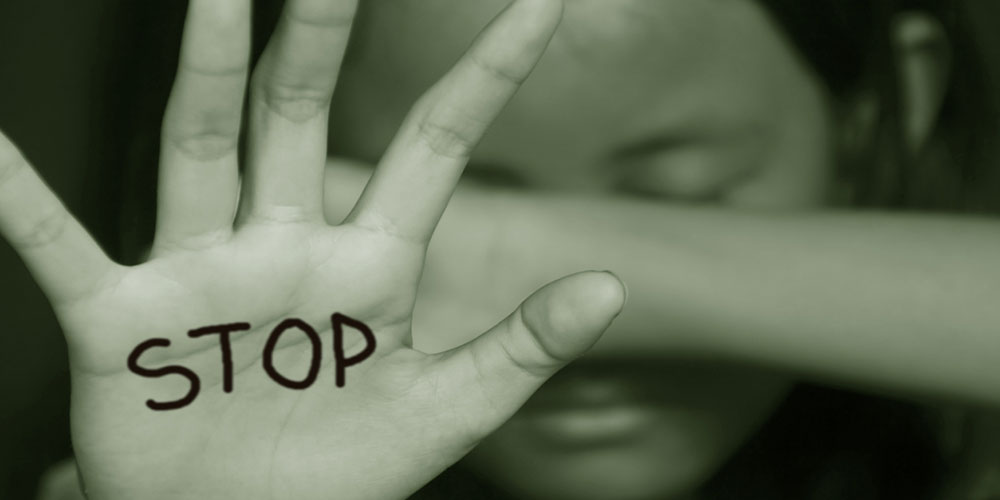What Are the Signs of Child Sexual Abuse?
Some of the more obvious physical signs of child sexual abuse include sexually transmitted diseases and pregnancy. Physical signs can also include bruising, bleeding, redness, bumps, scabs around the mouth, genitals and anus, urinary tract infections, abnormal vaginal or penile discharge, and difficulty walking or sitting.
Burns or bruises in the shape of objects are also signs and may be coupled with unconvincing explanations as to where the injury came from.
Unfortunately, with child sexual abuse, there are often no visible signs. Abnormal genital findings are rare, even in cases where abuse has been factually proven by other forms of evidence, according to One with Courage, the nation’s largest state membership association of children’s advocacy centers.
Behavioral changes are often the first signs of sexual abuse, including withdrawal and unexplained outbursts of anger.
“Sometimes there are shifts in their emotional state where they are depressed, anxious or fearful,” Cordelia Anderson, former president of the National Coalition to Prevent Child Sexual Abuse and Exploitation, told Campus Safety. “They may go from really enjoying someone’s company to really not wanting to be left alone with them.”
Sexual behavior and language that is not age-appropriate and understanding sex at a young age are also common signs.
“They are suddenly saying or doing things that don’t fit. They have been exposed to or taught something, and they are reacting,” described Anderson.
Many sexually abused children also revert to behaviors they may have exhibited at an earlier age, including thumb-sucking, bed-wetting and fear of the dark. In some cases, the victim can lose acquired language.
Other signs include:
- Fear of going home
- Chronic stomach pain and headaches
- Nightmares
- Declining academic performance
- Cruelty to animals
- Bullying or being bullied
- Setting fires
- Running away from home
- Self-harm
- Use of alcohol or drugs at an early age
What Are the Long-term Effects of Child Sexual Abuse?
According to the American Medical Association, 20% of all victims develop serious long-term psychological problems, which can include dissociative responses, nightmares, flashbacks and other symptoms of post-traumatic stress disorder. Long-term effects can also include sexual dysfunction, anxiety over sex or high-risk sexual behavior.
Adolescents who experienced rape or attempted rape are also 13.7 times more likely to experience rape or attempted rape in their first year of college.14
Additionally, child sexual abuse often leads to the following problems in adulthood:
Substance Abuse
Female adult survivors are nearly three times more likely to report substance use problems than non-abused children, and male survivors are 2.6 times more likely.15
Criminal Activity
Survivors are more than twice as likely to be arrested for property offenses (9.3% compared to 4.4%) and twice as likely to be arrested for violent offenses (20.4% vs. 10.7%).15
Mental Health Issues
Female survivors are more than twice as likely to suffer from depression. They are also three times more likely to develop psychiatric disorders.16
For male survivors, over 70% seek psychological treatment for issues such as substance abuse, suicidal thoughts and attempted suicide. Adult survivors are also more than twice as likely to report a suicide attempt.17
Eating disorders are also more common for adult survivors. One study found 24-year-old women who were sexually abused as children were four times more likely to be diagnosed with an eating disorder.18 Middle-aged women who were sexually abused as children were also twice as likely to be obese.19
Physical Health Issues
Adult survivors are at a greater risk of a wide range of non-life-threatening conditions such as fibromyalgia, severe premenstrual syndrome, chronic headaches and irritable bowel syndrome.20
Survivors are also 30% more likely to have serious medical conditions such as diabetes, cancer, heart problems, stroke and hypertension.20
Although many survivors of child sexual abuse struggle to cope with their trauma, there is help available. Some organizations include the National Sexual Violence Resource Center, the National Organization for Victim Assistance and the National Center for Victims of Crime.
If you know a child who has been sexually abused, suspect a child is being sexually abused, or are a victim of child sexual abuse, please call the National Child Abuse Hotline at (1-800) 422-4453 or the National Center for Missing and Exploited Children at (1-800) 843-5678.
Continue on to Parts 2, 3 and 4 of this series.
Sources:
- Sedlak, A.J., Mettenburg, J., Basena, M., Petta, I., McPherson, K., Greene, A., and Li, S. (2010)
- National Crime Victimization Survey (2002)
- Townsend, C., Rheingold, A.A. (2013)
- Briere, J., Elliott, D.M. (2003)
- Hanson, R.F., Resnick, H.S., Saunders, B.E., Kilpatrick, D.G., & Best, C. (1999)
- Ullman, S.E. (2007)
- Finkelhor, D., Ormrod, R., Chaffin, M. (2009)
- National Sex Offenders Registry
- American Academy of Pediatrics, Preventing Sexual Violence
- National Children’s Alliance
- Merrill, L.L., Newell, C.E., Gold, S.R., Millen, J.S. (1997)
- Snyder, H.N. (2000)
- Valenti-Heim, D., Schwartz, L. (1995)
- Lalor, K., McElvaney, R. (2010)
- Simpson, T.L. & Miller, W.R. (2002)
- Rohde, P., Ichikawa, L., Simon, G. E., Ludman, E. J., Linde, J. A. Jeffery, R. W., Operskalski, B. H. (2008)
- Dube, S.A., Anda, R.F., Whitfield, C.L., Brown, D.W., Felitti, D.J., Dong, M., Giles, W. (2005)
- Fuemmeler, B.F., Dedert, E., McClernon, F.J., Beckham, J.C. (2009)
- Rohde, P., Ichikawa, L., Simon, G.E., Ludman, E.J., Linde, J.A. Jeffery, R.W., Operskalski, B.H. (2008)
- Lanier, P., Jonson-Reid, M., Stahlschmidt, M. J., Drake, B., Constantino, J. (2010)







